Santa Cruz Waterlily - Now in Bloom!
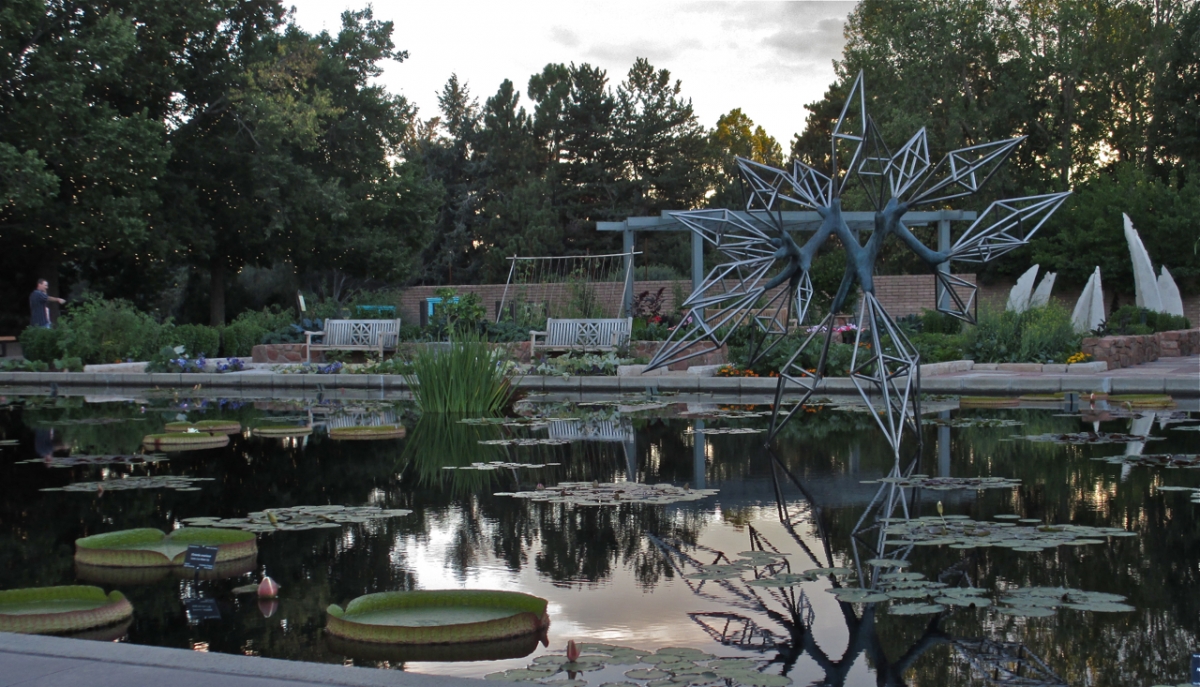 It isn't often that I linger at work until after the sun sets. Tonight is an exception. This evening, our Victoria cruziana plants (also known by the common name of Santa Cruz Waterilies) are coming into full bloom in the Monet Pool. As I sit on a bench beside the pond, the heady pineapple scent of a first night's Victoria blossom drifts my way. The creamy white petals are visible between the bronze tinged sepals and soon the bloom will open fully . . . although they say that a watched pot never boils and I am beginning to think that the same principle may apply to night-blooming lilies.
It isn't often that I linger at work until after the sun sets. Tonight is an exception. This evening, our Victoria cruziana plants (also known by the common name of Santa Cruz Waterilies) are coming into full bloom in the Monet Pool. As I sit on a bench beside the pond, the heady pineapple scent of a first night's Victoria blossom drifts my way. The creamy white petals are visible between the bronze tinged sepals and soon the bloom will open fully . . . although they say that a watched pot never boils and I am beginning to think that the same principle may apply to night-blooming lilies.
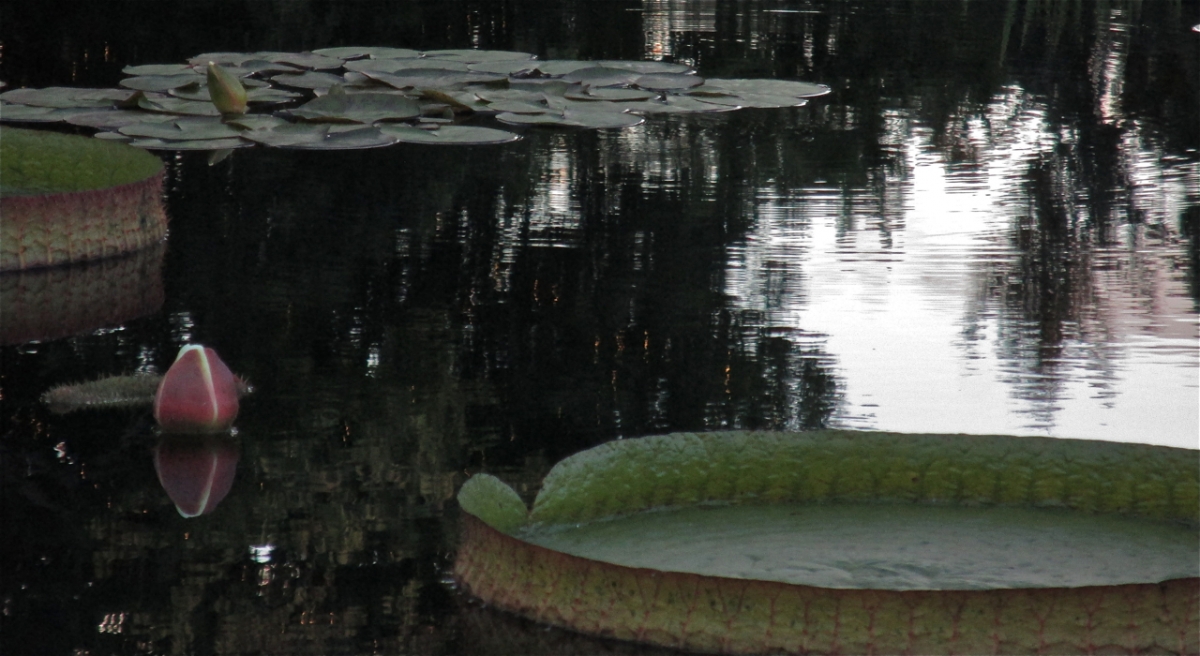
Native to slow-moving water in the Amazon River basin of South America, the genus Victoria consists of two species: cruziana and amazonica. V. cruziana is the hardier of the two and therefore easier to grow in Denver's climate. This plant showcases large platter-like leaves with leaf rims that can reach a height of 4-6". The underside of each leaf consists of an impressive network of thick veins that allows for air to be trapped under the leaf, giving it the ability to hold a good deal of weight... an advantage that hasn't escaped the notice of birds hunting for fish or other prey in the waters below. Sharp thorns line the underside of each leaf and stem: an effective 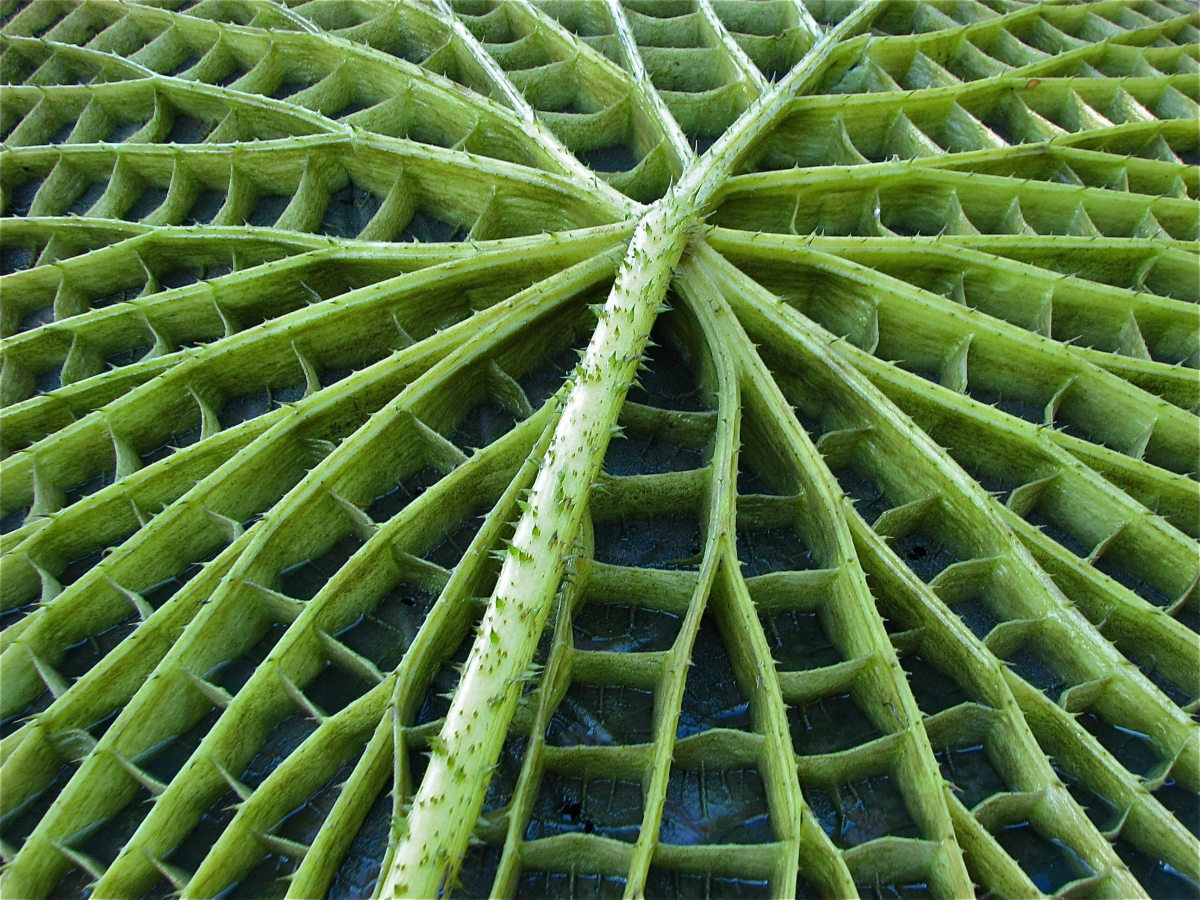 form of protection against would be predators, along with well-meaning horticulturists attempting to fertilize the plants!
form of protection against would be predators, along with well-meaning horticulturists attempting to fertilize the plants!
The impressive features of the plants don't end with the leaves, which brings me back to the point of my evening. The plants bloom at night, with each bloom lasting only two nights.
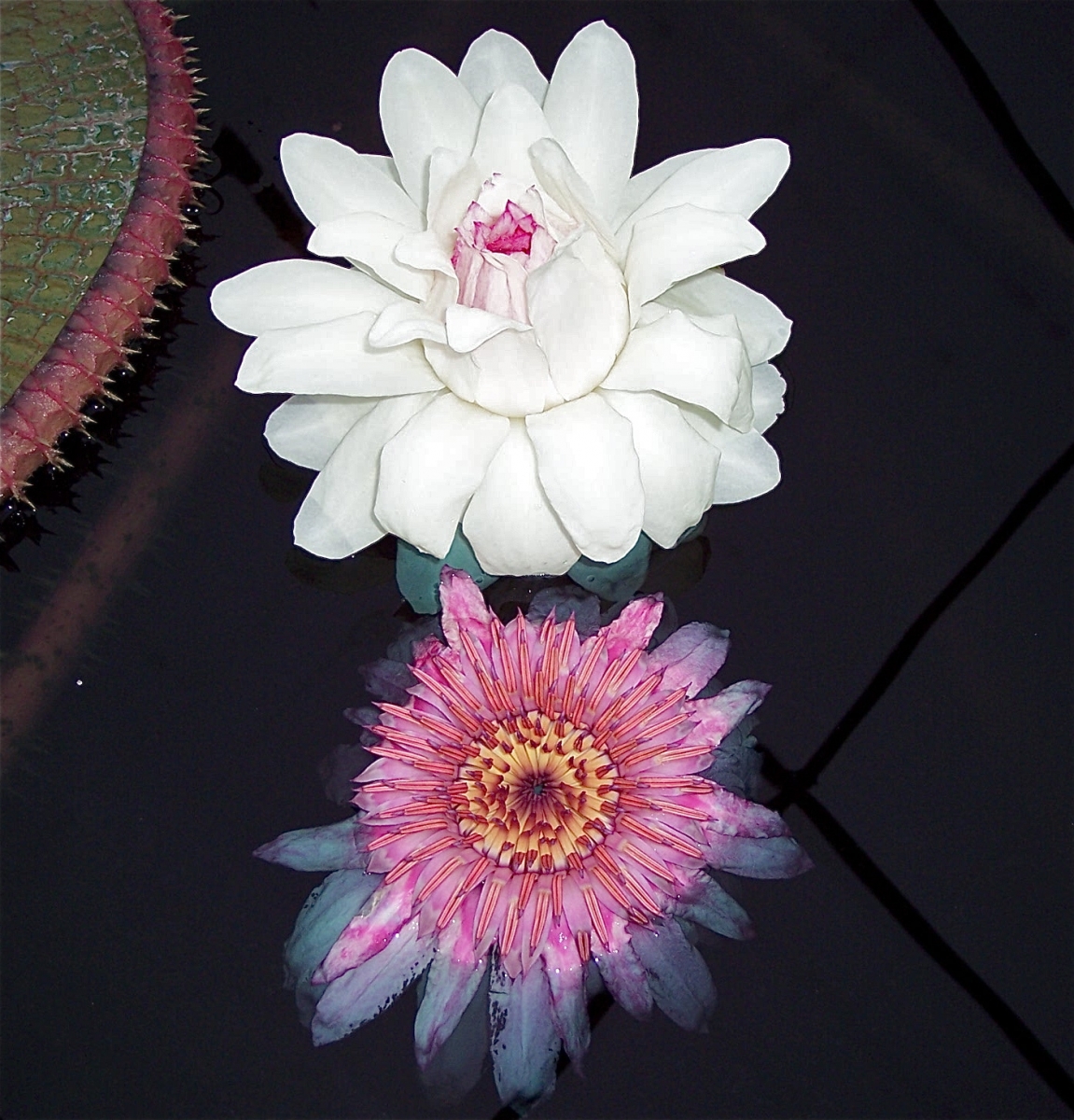
The first night's bloom opens a pure, creamy white and smells strongly of pineapple. This fragrance, combined with the bright color that makes the flower more visible in the darkness, are lures intended to draw scarab beetles which pollinate the plant in its native habitat. The bloom also heats up (a horticultural phenomenon known as thermogenesis), which helps to spread the pollinator-attracting scent.
As the first evening comes to an end, the first night's bloom will slowly close, trapping the beetles inside. It will reopen the following evening but with one noticeable change. The flower will transition from a female bloom to a male pollen-producing bloom that is pink in color. As the beetles emerge from this second evening's bloom, now covered in pollen, they will once again be drawn to the luminescent glow of a first night's flower, thereby pollinating the plants.
It is now 8:30 p.m. at the Gardens. The crickets are serenading me as the twinkle of lights in the trees towering above the Monet Deck are reflected in the dark water. And low and behold, the petals of a first night bloom are beginning to slowly open.
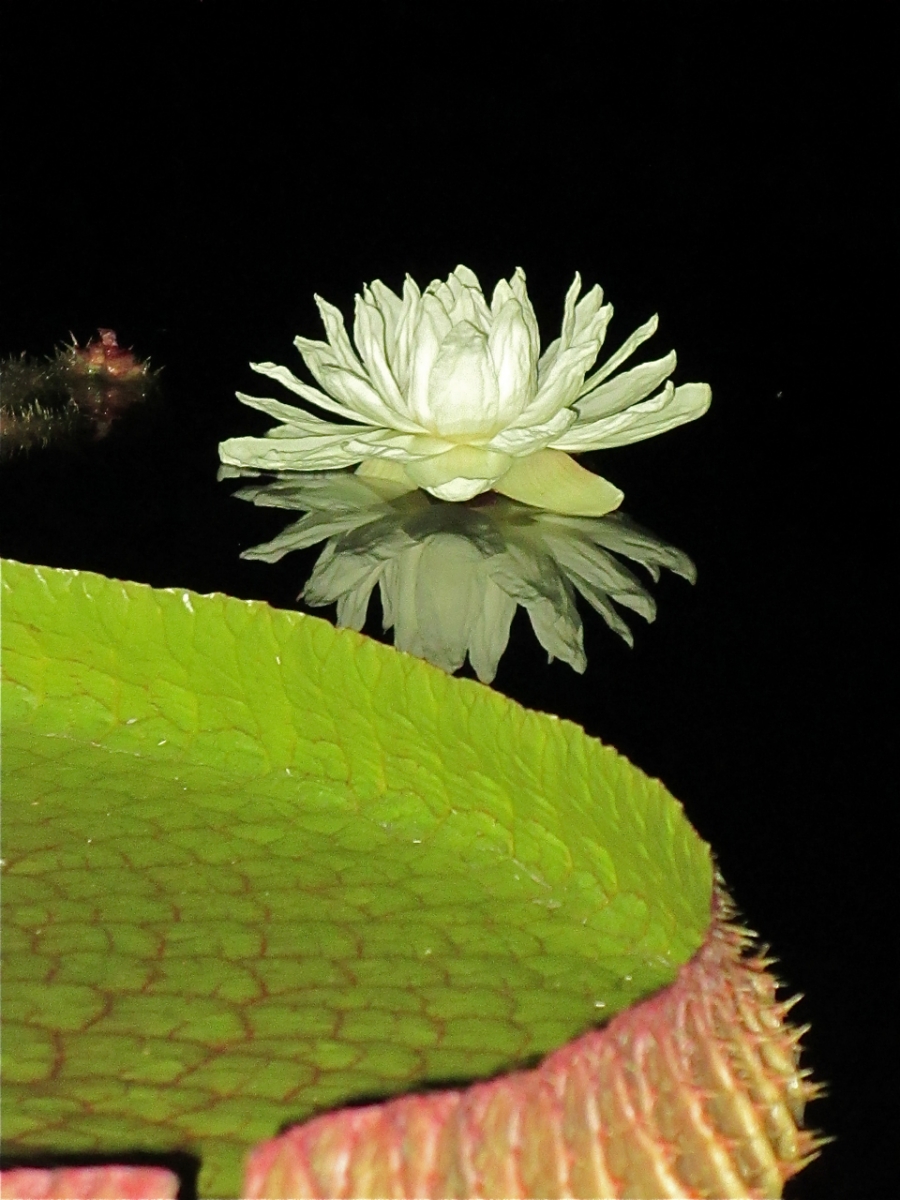
The Victoria cruziana plants at the Gardens will continue to produce blooms throughout the summer months. First night blooms often stay open throughout the early morning hours. Also on display in the Four Towers Pool are Victoria 'Longwood Hybrid' plants (a cross between the two species) which should also be coming into flower soon. The Gardens are open from 9 am to 9 pm daily unless otherwise noted on our website.
Add new comment